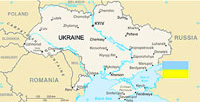Business New Europe: Amnesty International report: Ukraine voluntary battalions guilty of war crimes

(Business New Europe – bne.eu – September 9, 2014) Rights watchdog Amnesty International released a report on September 8 entitles (Ukraine: abuses and war crimes by the Aidar Volunteer Battalion in the north Luhansk region,” which claims militias fighting together with the official Ukrainian army are guilty of abuses including possible executions.
“Members of the Aidar territorial defence battalion, operating in the north Luhansk region, have been involved in widespread abuses, including abductions, unlawful detention, ill-treatment, theft, extortion, and possible executions,” the report says.
The Aidar Battalion is one of some 30 so-called volunteer battalions that have been fighting with Ukraine militia. However many of these battalions including Aidar are made up of right wing extremists of various shades, who have taken the opportunity of the fighting to pursue their own nationalist agendas.
“Our findings indicate that, while formally operating under the command of the Ukrainian security forces combined headquarters in the region members of the Aidar battalion act with virtually no oversight or control, and local police are either unwilling or unable to address the abuses, ” the Amnesty report concluded. “Some of the abuses committed by members of the Aidar battalion amount to war crimes, for which both the perpetrators and, possibly, the commanders would bear responsibility under national and international law.”
The report follows a similar report from Human Rights Watch based in Helsinki and released last month that said the use of Grad missiles by the Ukrainian army against residential areas, “could be a war crime.”
While these reports are from two of the most prominent human rights NGOs the results have been only perfunctory reported in the international press.
Read the report here http://www.amnesty.org/en/library/asset/EUR50/040/2014/en/e6776c69-fe66-4924-bfc0-d15c9539c667/eur500402014en.pdf
